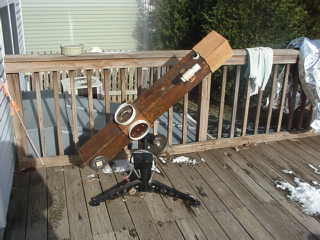
Last touched 2004 May 29
In 1986, I built a 4.25-inch f/10 refector planetary telescope based on optics suggested by Tom Burns and Richard (Dick) Suitor. The mirror was purchased from Jaegars (now out of business) for $30. The 1/2-inch secondary mirror was from Edmunds, as was the optical window. The window does away with the need for a contrast reducing spider. The 1/2-inch secondary reduces central obstruction, which according to some also improves contrast. The long focal length/high focal ratio provides good image scale for the aperture and increases the chance the mirror will deliever a good image. In this case, the mirror is spherical - I believe this is an important point, as the mirror surface is smoother - and not corrected for spherical abberation (it's not needed at this aperture/focal ratio anyway).
Bob considers this telescope to be the most successful of the several telescopes he has built. It has been used heavily to observe the planets from where ever Bob has lived. It is Bob's primary instrument for making drawings of Mars. It's seen use during the 1986, 1988, 1999, 2001, 2003 and 2005 Mars oppositions. It's been on four different mounts (one Dob, three equatorials), has been used for solar photography and most recently for CCD imaging.

Here's an overall view of the scope, here mounted on an older Meade German type equatorial mount. Note I normally leave the dobsonian bearings on the scope so it can be placed on the dob mount in a few minutes. Also note the square plywood dew cap over the front of the 'scope.
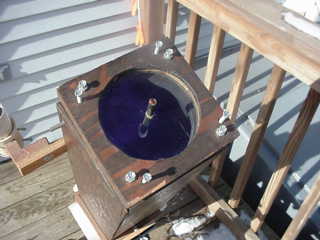
This telescope uses an optical window instead of the more conventional spider to hold the secondary mirror in place. The window is a "reject" from the Edmund Astroscan production. It's only problem was a flawed anti-reflection coating. This view shows the front end of the telescope, with good views of the adjustment screws for the window cell and the dowel rods that hold the secondary mirror. The dowel rods are glued to the window with aquarium cement. This glue was applied when the 'scope was built and is now more than 15 years old. The outside dowel rod is used to rotate the window for collimation. Once collimated, the window is "locked" into position with wedges of cork.
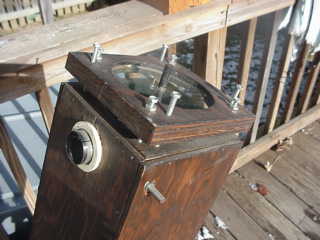
This view shows the window cell, the push-pull adjustment screws and the super-high tech plumbing fitting push-pull focuser. The cell is a sandwich of three pieces of 1/4-inch pieces of plywood.
The primary mirror cell is very simple. One bolt "pulling" from the center of a wood disc, and three pushing against the disc. A bit of a pain to colliminate, but once done it doesn't lose collimination very easy. The lenght of these four bolts are extra long for a reason: they allow the focal plane to be moved up or down around the focuser by a couple of inches.
An important design feature of this telescope is that the tube was purposely built two inches too long. The tiny (1/2-inch) secondary mirror requires the focal plane to be as close to the tube as possible. For normal visual observing, the focal plane is actually just inside the tube. Configured for CCD imaging, the focal plane is pushed up about one inch to just outside the tube. This is done by moving the primary mirror up and down the tube with the extra long collimination bolts. Remember, because this telescope is a planetary scope, the required fully illuminated field of view is very, very small, perhaps a quarter of a degree.
For normal operations, there is a dew cap mounted over the window cell.
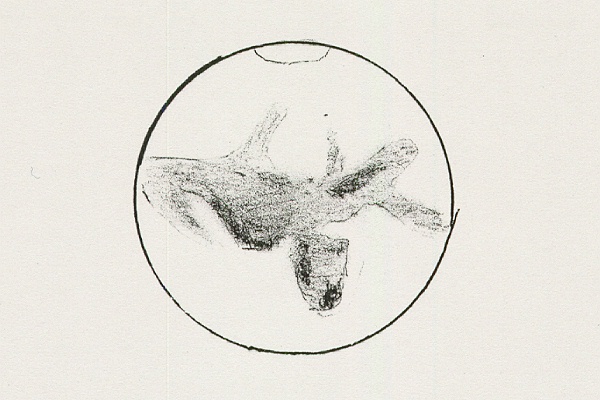
Here is a drawing of Mars that Bob made on September 26, 1988. Bob made this drawing with a 12mm Vernonscope Erfle eyepiece and a 2.4x barlow for 212x. Drawing made from Columbus, Ohio.
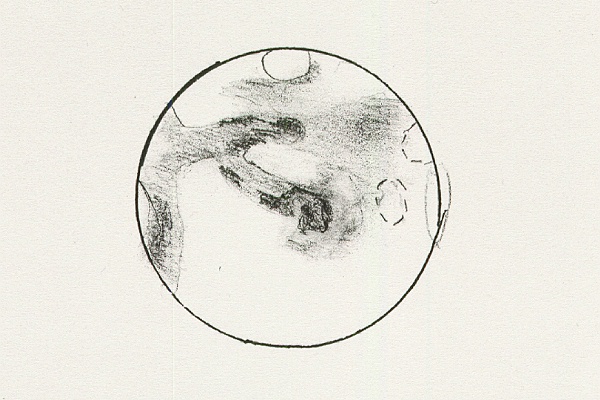
Here is a drawing of Mars that Bob made on September 20, 1988. 212x. Drawing made from the upstairs porch of the apartment in Columbus, Ohio where Bob lived. At this time, the telescope was mounted on a homemade equatorial inverted fork mount that was driven.
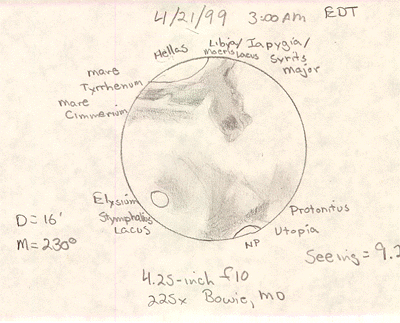
April 21, 1999, from Bowie, MD. Mars is 16 arcseconds in diameter, the scope is on the Meade mount and I've used the trusty 12mm Vernonscope Erfle and 2.4x barlow. Gotta love those early morning observing sessions.
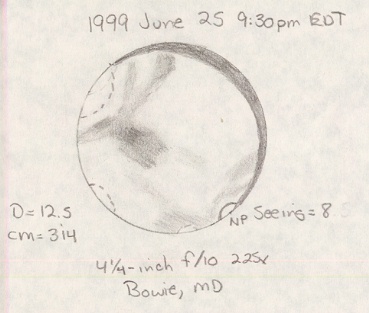
June 25, 1999, Bowie again, also the Meade mount. Now we are past opposition, it's evening and Mars is down to 12.5 arcseconds.
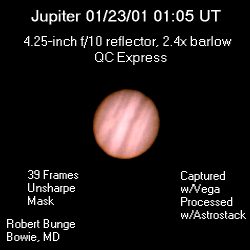
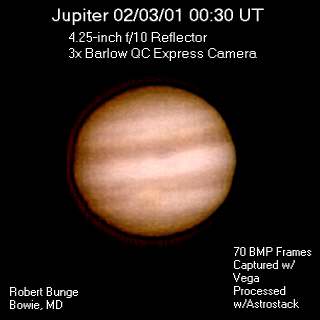
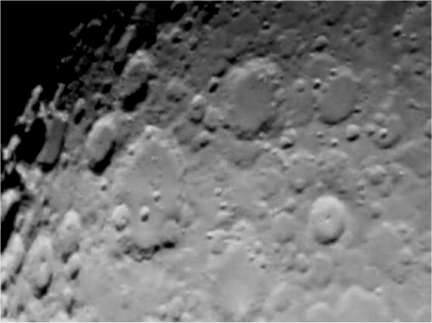
Comments To:bbunge@ladyandtramp.com
Back to Bob's Homepage.